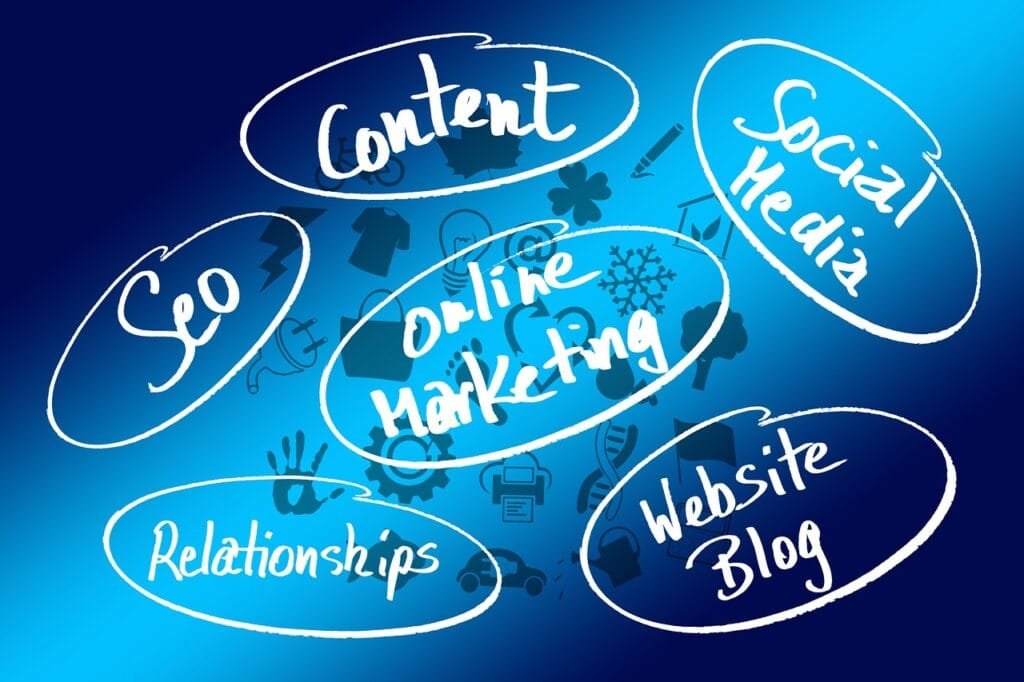In today’s digital era, having a robust online presence isn’t just a nice-to-have—it’s a necessity. With consumers increasingly turning to the internet to make purchasing decisions, businesses need to leverage digital channels to reach, engage, and convert their target audience. That’s where a digital marketing plan comes into play.
The challenge, though, lies in knowing where to start, what to include, and how to execute your plan effectively. This guide is designed to help you navigate those challenges and set you on the path towards successful digital marketing.
In this comprehensive guide, we’ll delve deep into the world of digital marketing. We’ll discuss its importance, benefits, and key components, including audience identification, objective setting, budget planning, channel selection, content strategy, performance monitoring, and more.
We’ll walk you through the step-by-step process of creating a digital marketing plan, touch upon advanced strategies, and highlight useful templates and tools. Additionally, we’ll analyze successful digital marketing plans from real-world companies for added insight and inspiration.
Understanding the Basics
Importance of a Digital Marketing Plan
Digital marketing has revolutionized the way businesses connect with consumers. It enables companies to reach a global audience, engage with customers in real-time, and tailor their messages to individual preferences—all at a fraction of the cost of traditional marketing. However, without a well-thought-out plan, these opportunities can quickly become overwhelming, and resources can be wasted.

A digital marketing plan acts as a strategic roadmap for your online marketing efforts. It helps you identify your target audience, define your marketing objectives, decide on the right digital channels to utilize, allocate your budget effectively, and establish a content strategy.
More importantly, it provides a framework for monitoring your performance, analyzing results, and making necessary adjustments to improve your return on investment.
By providing direction and enhancing coordination among different teams, a digital marketing plan not only helps you maximize your digital marketing efforts but also ensures they align with your overall business goals.
Whether you’re looking to increase brand awareness, generate leads, boost sales, or improve customer loyalty, a digital marketing plan can guide you towards achieving those objectives.
This article provides an in-depth understanding of digital marketing, its key components, and how you can create a strategic digital marketing plan that propels your business forward in the digital landscape.
Understanding Digital Marketing
Digital marketing is the practice of promoting products or services using digital technologies, mainly on the Internet, but also including mobile phones, display advertising, and any other digital medium. It encompasses all marketing efforts that use an electronic device or the internet.
Overview and Importance of Digital Marketing in the Modern Business Environment
In the digital age, where consumers are increasingly making decisions based on online information, digital marketing has become a critical component of any business strategy. It offers several benefits over traditional marketing, such as the ability to reach a global audience, target specific demographics, engage with customers in real-time, and gather valuable data on consumer behavior.
Moreover, digital marketing channels, like search engines, social media, email, and websites, offer businesses various ways to connect with existing and prospective customers. They can provide valuable content, offer personalized experiences, and build lasting relationships.
The importance of digital marketing also lies in its cost-effectiveness. Unlike traditional methods, which often require substantial budgets for TV commercials or print advertisements, digital marketing channels can be leveraged at much lower costs, making them accessible to businesses of all sizes.
Additionally, because digital marketing efforts can be tracked and measured, businesses can easily calculate their return on investment and adjust their strategies as needed for better outcomes.
Breakdown of Different Channels in Digital Marketing
There are several channels that fall under the umbrella of digital marketing, each with its unique advantages:
- Search Engine Optimization (SEO): This involves optimizing your online content to rank higher on search engine results pages (SERPs), thereby increasing the amount and quality of traffic to your website.
- Pay-Per-Click (PPC) Advertising: This is a model where advertisers pay a fee each time their ad is clicked. It’s a way of buying visits to your site, rather than attempting to earn them organically.
- Content Marketing: This strategic approach focuses on creating and distributing valuable, relevant, and consistent content to attract and retain a clearly defined audience and ultimately drive profitable customer action.
- Social Media Marketing: This involves using social media platforms to connect with your audience, build your brand, increase sales, and drive website traffic.
- Email Marketing: This is a way to reach consumers directly via electronic mail. It’s a direct and effective way to connect with leads, nurture them, and turn them into customers.
- Affiliate Marketing: This is a performance-based advertising model where a company pays third-party publishers to generate traffic or leads to the company’s products and services.
Benefits of a Comprehensive Digital Marketing Plan
In an increasingly digital world, having a comprehensive digital marketing plan is more than a necessity—it’s a crucial driver of success. It serves as a roadmap to establish, maintain, and grow online presence, enabling businesses to reach their target audience, enhance engagement, and drive conversions effectively.
Discussion of the Potential Benefits and Impacts of a Robust Digital Marketing Strategy
- Reaching the Right Audience: Digital marketing channels offer advanced targeting options. Whether it’s through keywords, demographics, interests, or behaviors, businesses can reach those who are most likely to be interested in their products or services.
- Increasing Brand Awareness and Engagement: With numerous platforms and tactics at their disposal, businesses can build and enhance their brand reputation online. Engaging content can draw people in, while comments, shares, and likes can increase engagement levels.
- Driving Traffic and Conversions: Digital marketing can drive high-quality traffic to a company’s website or social media profiles. It helps nurture leads through the sales funnel, driving them towards making a purchase or taking a desired action.
- Cost-Effective Promotion: Compared to traditional marketing methods, digital marketing can reach a wider audience at a lower cost. Plus, with various tools available, marketers can optimize their campaigns to achieve maximum return on investment.
- Data-Driven Decisions: One of the significant benefits of digital marketing is the ability to track and measure results in real time. Analytics provide insight into customer behavior and campaign performance, which can guide future strategy and ensure resources are allocated effectively.
- Enhanced Customer Experience: Digital marketing enables businesses to engage with customers on platforms they frequent, offering them a personalized experience. From tailored email campaigns to chatbots on websites, digital marketing offers numerous ways to improve the customer journey.
By mapping out a well-thought-out digital marketing plan, businesses can effectively integrate these benefits into their overall marketing strategy, driving growth and profitability in the long run.
Key Elements of a Digital Marketing Plan
A comprehensive digital marketing plan is more than just a list of tactics—it’s an integrated strategy that aligns with your business goals, understands your audience’s needs, and measures the results of your efforts. In this section, we’ll delve into the core elements of a digital marketing plan.
Identifying Your Target Audience

Importance of Audience Identification in Digital Marketing
Knowing your audience is the first and arguably the most critical step in creating a digital marketing plan. It’s about understanding who your prospective customers are, what they want, where they hang out online, and how they like to engage.
By identifying your target audience, you can tailor your messaging, choose the right marketing channels, and create content that resonates with them. It allows you to focus your efforts on prospects most likely to convert, improving efficiency and effectiveness of your marketing campaigns.
Strategies and Tools for Effective Audience Identification
Market research and data analysis are two crucial methods to understand your audience. They provide insights into demographics, psychographics, behaviors, and needs of your target audience. Surveys, interviews, focus groups, and social media monitoring are among the tools to gather these insights.
In addition to primary research, businesses can also leverage digital analytics tools to gain insights into their online audience. Google Analytics, for example, can provide demographic information, interests, and behaviors of website visitors. Social media platforms also offer analytics that show who engages with your content, when they’re online, and how they interact with your brand.
Setting Digital Marketing Objectives
The Need for Clear and Measurable Objectives
Setting clear and measurable objectives is a crucial element of a successful digital marketing plan. These objectives give your digital marketing efforts a clear direction and provide a benchmark against which you can measure your progress.
Objectives should be specific, measurable, attainable, relevant, and time-bound (SMART). They could be related to increasing website traffic, improving conversion rates, boosting brand awareness, or enhancing customer engagement.
Examples of Common Digital Marketing Objectives
Examples of common digital marketing objectives include:
- Increase website traffic: This could involve strategies like search engine optimization (SEO), content marketing, and social media marketing.
- Improve conversion rates: Optimizing your website’s user experience, refining your landing pages, and personalizing your marketing messages can help increase the percentage of visitors who convert into leads or customers.
- Boost brand awareness: Here, strategies could include running a social media campaign, collaborating with influencers, or creating viral content.
- Enhance customer engagement: This involves creating valuable content, encouraging social media interactions, and providing excellent customer service.
Budget Planning

Allocating Budgets for Different Digital Marketing Channels
Budget planning is a critical component of your digital marketing plan. A well-planned budget ensures that you allocate resources effectively across different marketing channels. Each channel comes with its own costs and potential returns, and your budget should reflect your objectives, target audience, and business model.
You might allocate more resources towards a channel that’s proven to deliver results, while testing newer or less proven channels with a smaller portion of your budget. Remember, budget planning isn’t a one-time task, but an ongoing process that requires regular reviews and adjustments based on performance.
Overview of Cost-Effective Digital Marketing Strategies
While digital marketing requires investment, some strategies are notably cost-effective. Content marketing, for instance, can provide a high return on investment (ROI) as quality content continues to attract traffic and generate leads over time. SEO is another cost-effective strategy, though it requires time and effort to see results. Social media and email marketing are also cost-effective ways to reach your audience, especially when combined with a solid content strategy.
Choosing the Right Digital Marketing Channels
Understanding the landscape of digital marketing channels is key to developing an effective marketing plan. Here is a brief overview of some significant channels:
- SEO (Search Engine Optimization): SEO involves optimizing your website and content to rank higher on search engine results pages (SERPs). It’s a long-term strategy that brings organic traffic to your website.
- Content Marketing: This involves creating and distributing valuable content to attract, engage, and convert your target audience. Blogs, videos, infographics, podcasts, and webinars are some types of content you can create.
- Social Media Marketing: With billions of users worldwide, social media platforms offer a great way to reach and engage with your audience. Different platforms cater to different demographics, so you’ll want to choose those most popular with your target audience.
- Email Marketing: Email marketing allows you to communicate directly with your audience. It’s great for nurturing leads, retaining customers, and promoting your products or services.
- PPC (Pay-Per-Click): PPC advertising involves paying each time a user clicks on your ad. Google Ads and social media ads are common examples. PPC can bring immediate traffic, but it requires ongoing investment.
Selecting Channels Based on Business Type, Goals, and Target Audience
Selecting the right channels is essential for the success of your digital marketing plan. This decision should be based on your business type, your goals, and your target audience.
For instance, if you’re a B2B company targeting professionals, LinkedIn might be a valuable platform for you. If you’re a fashion brand aiming to increase brand awareness among young consumers, Instagram could be your best bet.
Remember, it’s not about being everywhere; it’s about being where your target audience is and achieving your objectives.
Crafting a Content Strategy
The Role of Content in Digital Marketing
Content plays a central role in digital marketing. It helps you attract audiences, engage them, and guide them towards desired actions. By offering valuable content, you build trust, authority, and relationships.
Great content also supports SEO, social media engagement, email marketing, and more. Whether it’s blog posts, social media updates, email newsletters, or videos, content brings your marketing efforts to life.
Creating a Content Calendar
A content calendar helps plan, organize, and schedule your content activities. It ensures consistency, which is vital for keeping your audience engaged and for SEO.
The calendar should detail what content you’ll create, when you’ll publish it, and where you’ll promote it. You might also include who’s responsible for each task, any relevant keywords or hashtags, and any associated marketing campaigns.
Remember to diversify your content to keep your audience interested. Include different formats and topics that your audience finds valuable.
Analyzing and Monitoring Performance
Explanation of Key Digital Marketing Metrics
Analyzing and monitoring your performance is essential to understanding the effectiveness of your digital marketing plan. There are several key metrics you should monitor:
- Traffic metrics: These include the number of visitors to your website and their behavior, such as pages per visit, time on site, and bounce rate.
- Conversion metrics: These measure the effectiveness of your marketing efforts in prompting desired actions. They include conversion rates, cost per conversion, and customer acquisition cost.
- Engagement metrics: These track how users interact with your content on social media, email, or your website.
- Revenue metrics: These include sales, revenue, ROI, and lifetime value of a customer.
Importance of Ongoing Monitoring and Optimization
Digital marketing requires ongoing monitoring and optimization. By continuously tracking your performance, you gain insights into what’s working and what’s not. This allows you to optimize your strategies, improve performance, and maximize ROI.
Whether it’s tweaking your SEO tactics, refining your social media posts, or improving your email open rates, ongoing optimization is the key to digital marketing success.
Creating a Digital Marketing Plan: Step by Step
Now that we’ve covered the key elements of a digital marketing plan, let’s delve into the step-by-step process of creating one.
Define Your Target Audience
Detailed Strategies for Defining and Understanding the Target Audience
Before you can effectively market to your audience, you need to know who they are. Defining your target audience involves identifying the characteristics, needs, and preferences of your ideal customer.
Here are some strategies to do this:
- Create Buyer Personas: These are detailed profiles of your ideal customers. They should include demographics, psychographics, motivations, and pain points.
- Conduct Market Research: Use surveys, interviews, and social media analytics to gather data about your audience.
- Analyze Your Competition: Look at who your competitors are targeting. This can provide insights into potential market segments.
Remember, the better you understand your audience, the more effectively you can engage them with your marketing messages.
Set Your Objectives
In-depth Guide to Setting SMART Objectives in Digital Marketing
Objectives guide your digital marketing plan. They should be SMART: Specific, Measurable, Achievable, Relevant, and Time-Bound.
For instance, instead of saying “I want to increase website traffic,” a SMART objective would be “Increase website traffic by 20% over the next quarter through SEO and content marketing.”
Having SMART objectives allows you to clearly define what you want to achieve, devise strategies to reach those goals, and measure your progress.
Plan Your Budget
Detailed Guide on Planning and Allocating Budget for Different Channels
Your budget is a crucial component of your digital marketing plan. It dictates which strategies you can implement and how extensively you can execute them. Here’s a process for planning your budget:
- Determine your overall digital marketing budget: This could be a percentage of your gross revenue, or based on your financial goals and how quickly you want to achieve them.
- Allocate your budget across different channels: Based on your objectives, target audience, and their online behavior, decide how much to allocate to each channel. Remember, it’s not necessary to use every channel. Prioritize those that will best help you reach your goals.
- Factor in costs for tools, resources, and manpower: These could include marketing automation tools, social media management tools, SEO tools, content creation, and paid advertising costs.
- Plan for monitoring and adjustments: Set aside resources for analytics tools and for making necessary adjustments to your strategies based on their performance.
Choose Your Digital Marketing Channels
We’ve touched on the importance of selecting the right channels. When choosing, consider your business type, goals, and where your target audience spends their time online.
If your audience frequently uses social media, allocate resources to build your presence there. If they actively use search engines to find information, invest in SEO and PPC. Use your buyer personas and market research data to guide your decisions.
Remember, you don’t have to be on every platform. It’s better to focus on a few key channels and use them effectively.
Develop Your Content Strategy
A solid content strategy is the cornerstone of digital marketing. It helps you connect with your audience, build brand trust, and convert prospects into customers.
To develop your content strategy:
- Understand your audience: Use your buyer personas and customer journey map to create content that addresses your audience’s needs at each stage of the buyer’s journey.
- Set clear content objectives: These could be increasing website traffic, generating leads, or improving brand awareness.
- Determine the type of content you’ll create: This could range from blog posts, infographics, videos, to webinars, depending on what resonates best with your audience.
- Develop a content calendar: This helps you plan when and where you’ll publish your content. It can help ensure consistency and timely engagement with your audience.
- Plan for content promotion: Whether through social media, email marketing, or SEO, you’ll need to promote your content to maximize its reach and impact.
Implement Your Digital Marketing Plan
The next step is to bring your plan to life. Here’s a simple guide:
- Prioritize your strategies: Start with the strategies that will bring the most impact and are aligned with your objectives.
- Assign tasks: Distribute responsibilities among your team members based on their skills and expertise.
- Set a timeline: Having a clear schedule will ensure all tasks are carried out in a timely manner.
- Execute your plan: This includes creating and publishing content, running campaigns, and interacting with your audience.
Remember, consistency is key in digital marketing. Maintain a consistent brand voice across all platforms and stick to your content schedule.
Monitor, Analyze, and Adjust Your Plan
Monitoring and analyzing your efforts is essential to understand the effectiveness of your plan. Here’s how:
- Track your KPIs: Use tools like Google Analytics, social media analytics, or email marketing software to track your key performance indicators.
- Analyze your performance: Regularly review your data to understand what’s working and what’s not. Look for patterns and trends.
- Adjust your plan based on insights: If a strategy isn’t working as well as you’d hoped, don’t be afraid to adjust it. Digital marketing is all about adaptability.
This is an ongoing process. The digital landscape is always changing, so it’s important to continually evaluate and tweak your plan as necessary.
Advanced Digital Marketing Strategies
The digital marketing space is continually evolving. To stay ahead of the curve, it’s crucial to explore and embrace advanced digital marketing strategies. Here are a few of the most impactful trends:
- Machine Learning: Machine learning algorithms can analyze vast amounts of data to deliver insights, predict trends, and personalize experiences. They can help businesses target their audience more effectively, improve customer experience, and increase conversion rates.
- Predictive Analysis: This uses historical data, machine learning, and statistical algorithms to predict future outcomes. It can be used in various ways in digital marketing, like predicting customer behavior, optimizing marketing campaigns, and improving customer retention.
- Personalization: Personalized marketing is about tailoring your messaging and offers to individual customers based on their preferences and behaviors. It’s been shown to improve customer engagement, loyalty, and conversion rates.
- Artificial Intelligence (AI): AI can automate tasks, provide customer service through chatbots, analyze data, and much more. It’s making digital marketing more effective and efficient.
- Augmented Reality (AR) and Virtual Reality (VR): These immersive technologies provide innovative ways to enhance customer experiences and engage your audience. For example, AR can let customers virtually try before they buy, while VR can offer virtual tours or experiences.
Remember, it’s not about chasing every new trend, but about finding the strategies that align best with your business goals and target audience.
Digital Marketing Plan Templates and Tools
When developing a digital marketing plan, there are many tools and templates available to streamline the process and boost your efforts. Here are a few:
- Google Analytics: This free tool allows you to monitor your website traffic, analyze user behavior, and understand the effectiveness of your SEO efforts.
- SEMrush: It’s an all-in-one digital marketing toolkit for keyword research, competitive analysis, SEO, PPC, and social media marketing.
- HubSpot’s Marketing Hub: It offers a suite of tools for content marketing, SEO, email marketing, social media marketing, and analytics.
- Canva: This is a user-friendly graphic design tool for creating engaging visual content for your digital marketing campaigns.
- Hootsuite: It’s a social media management platform that lets you schedule posts, monitor mentions, and analyze performance across multiple social networks.
For templates, there are many free resources online, like HubSpot’s digital marketing plan template or Content Marketing Institute’s editorial calendar template, which can serve as starting points for your plan.
Real-World Examples: Successful Digital Marketing Plans
Learning from the success of others can provide invaluable insights. Let’s look at a couple of companies that have implemented effective digital marketing plans.
- Zappos: Known for exceptional customer service, Zappos uses social media platforms to engage with its customers. They actively respond to queries and complaints, demonstrating a commitment to customer satisfaction. Zappos has also effectively utilized user-generated content by encouraging customers to share their experiences using the brand’s products. Their holistic digital marketing strategy focuses on building customer relationships rather than just selling products.
- Airbnb: Airbnb has successfully leveraged content marketing to build its brand. They offer city guides, host stories, and an online magazine to engage their audience. Their “Live There” campaign, which encourages travelers to “live like a local,” shows the power of aligning digital marketing strategies with brand values and target audiences. Airbnb’s use of machine learning for personalized recommendations further enhances the customer experience.
- Dove: Dove’s “Real Beauty” campaign, which promoted body positivity, used emotional storytelling to connect with its audience on a deeper level. By creating content that resonated with their target market and sparked conversations, Dove was able to build a powerful brand image and drive engagement.
These examples show how a well-planned and executed digital marketing plan can lead to significant success.
Wrapping Up
Digital marketing is an essential aspect of any business in today’s digital age. A comprehensive digital marketing plan serves as a roadmap to achieving your business objectives. It involves understanding your target audience, setting clear objectives, budget planning, choosing the right channels, crafting a content strategy, and continuously monitoring and optimizing your efforts.
Implementing advanced strategies like machine learning, predictive analysis, and personalization can give your business a competitive edge. Utilizing available tools and templates can also streamline the planning process and enhance your marketing efforts.
Remember, digital marketing is not a set-it-and-forget-it proposition. It requires ongoing effort, adaptation, and creativity. By learning from successful companies and staying updated with the latest trends, you can ensure that your digital marketing plan remains effective and drives growth for your business.
Digital marketing is a journey. So buckle up, and let the adventure begin!
Read Next:
- How to Use Personalization & Targeting in Marketing Automation
- 17+ Top Webinar Software Platforms: What’s the Best?
- 17 Best High-Performing Landing Page Tools: Skyrocket Conversions
- Best SEO Tools in 11 Categories to Elevate Your SEO
- 51+ Outstanding Email Marketing Tools to Skyrocket ROI
- 11 Best SMS Marketing Software: Our Picks!
- 11 Marketing Analytics Tools to Elevate Your Data-Driven Strategies





















Comments are closed.